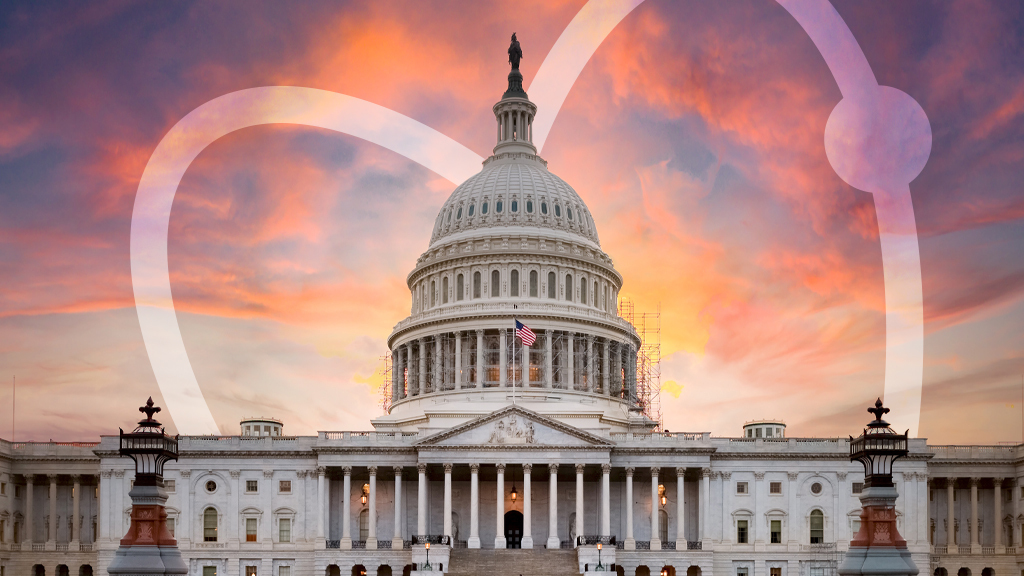Legislative Update
Trump Administration Releases FY26 Budget
By NSTA Legislative Affairs & Advocacy Team
Posted on 2025-05-07

Disclaimer: The views expressed in this blog post are those of the author(s) and do not necessarily reflect the official position of the National Science Teaching Association (NSTA).
Last week the White House released its fiscal year (FY) 2026 “skinny” budget proposal. While the document maintains that key funding streams like Title I and the Individuals with Disabilities Education Act (IDEA) would be preserved, it appears that many traditional federal programs would be either eliminated or dramatically downsized under the proposal. Here is what we know so far.
K–12 Reforms. A major consolidation of 18 K–12 grant programs, including Title I, into a new “K–12 Simplified Funding Program” intended to give states more control. Despite a $4.5 billion reduction, the Department of Education suggests Title I would remain fully funded. The budget eliminates funding for several Diversity, Equity, and Inclusion (DEI)-related initiatives, migrant education programs, and English language learning programs, while boosting charter school support by $60 million.
Special Education. A new “Special Education Simplified Funding Program” is proposed to combine seven IDEA programs into one block grant, though specific funding details are not yet available.
Higher Education Cuts. TRIO and Gaining Early Awareness and Readiness for Undergraduate Programs (GEAR UP), long-standing support programs for low-income college-bound students, would see $1.6 billion in cuts. Federal Work-Study and Supplemental Educational Opportunity Grants face nearly $2 billion in combined reductions. The budget also cuts funding to Howard University and State Department–run cultural exchange programs.
More comprehensive budget details will be released later this month. Keep in mind that this is the Administration’s “wish list,” that Congress will make the final decisions about spending, and that Democratic support is necessary for final passage. Many advocates, including NSTA, are preparing to weigh in on the FY26 budget. Stay tuned.
Meanwhile, work on the reconciliation bill for the FY2025 budget also continues. The House Workforce and Education Committee has marked up their portion of the bill, and House Speaker Mike Johnson (R-LA) hopes to see the “big, beautiful bill” pass the House by July 4.
NAEP Assessments Cut Following Budget and Staffing Reductions
The National Assessment of Educational Progress (NAEP), widely known as the "nation’s report card," will be significantly reduced over the next eight years following budget and staffing cuts at the National Center for Education Statistics (NCES).
Last week the National Assessment Government Board (NAGB) established a new testing schedule; beginning in 2026, NAEP assessments in specific subjects and grade levels will be suspended. Twelfth-grade students will not be tested in science or U.S. history through at least 2032. Additionally, a planned writing assessment for grades 4, 8, and 12 in 2032 has been canceled. Fourth-grade students will no longer take the 2028 science assessment, and eighth-grade students will lose state-level reporting for U.S. history in 2030. District-level reporting for eighth-grade science will also be discontinued during the same period.
Read more here and here.
President Trump Signs Executive Orders Targeting Education Reforms
Last month President Trump signed a series of executive actions affecting both higher education and K–12 schools. The orders focus on restructuring the accreditation system for colleges and universities, revising school discipline guidance, promoting workforce training, advancing artificial intelligence education, strengthening support for Historically Black Colleges and Universities (HBCUs), and disclosing of foreign gifts. See here for the official Executive Order (EO) fact sheet and below for the education executive orders.
- Advancing Artificial Intelligence Education for American Youth
- Transparency Regarding Foreign Influence at American Universities
- Reforming Accreditation to Strengthen Higher Education
- White House Initiative to Promote Excellence and Innovation at Historically Black Colleges and Universities
- Preparing Americans for High-Paying Skilled Trade Jobs of the Future
- Reinstating Common Sense School Discipline Policies
- Restoring Equality of Opportunity and Meritocracy
NASEM Releases Report on STEM Education in Rural Areas
The National Academies of Sciences, Engineering, and Medicine Board on Science Education has released a new consensus report on K–12 STEM Education and Workforce Development in Rural Areas (2025). This PDF is available at http://nap.nationalacademies.org/28269. Chapters include Defining and Characterizing Rural America; Education Policy, Funding, and Programs in Rural Areas; National Trends in Rural STEM Education and Workforce Development; Effective STEM Learning Experiences and Pathways; and Educator Recruitment, Retention, and Professional Learning.
NSF Director Resigns
The director of the National Science Foundation (NSF) announced his resignation on April 24, 16 months before his six-year term ends. Read more in this article from Science.
For the latest advocacy and policy updates, be sure to check out our Legislative Updates blog series, which is featured in our e-newsletters, NSTA Reports, and NSTA Weekly. You can also access the articles directly on the NSTA Blog.
The mission of NSTA is to transform science education to benefit all through professional learning, partnerships, and advocacy.


